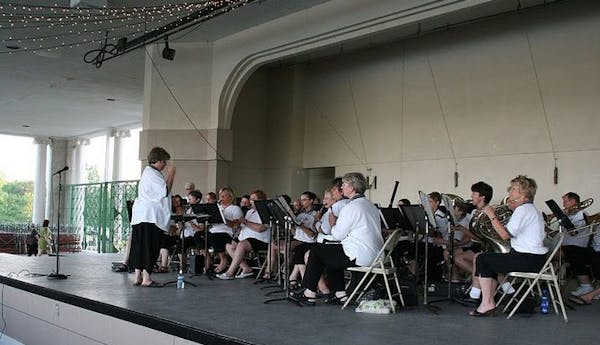At a recent meeting to explain the resumption of state rule-making for the Mississippi River corridor, there were sharp jabs from Twin Cities suburbs that worked with river land owners to derail the process more than two years ago.
This spring the Legislature appropriated $100,000 for the Department of Natural Resources to finish drafting minimum standards to improve the hodgepodge of local regulations for permitted uses and changes along the river shoreline from Dayton to Hastings.
Some of the same cities that objected to the rules drafted in 2009-10 expressed their concerns again last week in St. Paul at a meeting co-hosted by the DNR in the League of Minnesota Cities building. DNR Commissioner Tom Landwehr opened the meeting by acknowledging the concerns.
"We are looking at this as a chance to hit the reset button," he said. He said existing city shoreline regulations sometimes conflict and are based on ambiguous gubernatorial executive orders dating back to 1976. "Our goal is to have consistent rules that are easier to implement," Landwehr said.
He told about 50 city and state officials that the DNR will use the drafted rules as a starting point, then hear from cities and other stakeholders and revise them as needed.
The draft rules "were a disaster to start with" because they "didn't consider the impact on the cities on the river," said Anoka City Council Member Jeff Weaver, who lives on the river. "Most of Anoka [shoreline properties would have been] nonconforming lots … We need a fresh start."
The rule-making process had stalled because the DNR missed a January 2011 legislative deadline to publish a notice of intent to adopt them. After 18 months during which the DNR held dozens of meetings with interested parties and revised rules, the agency said it ran out of time to thoroughly evaluate the voluminous, wide-ranging public input. The Legislature had approved $500,000 over two years for the process.
The rules would dictate matters such as building height and how close to a bluff top structures could be built. The rules are aimed at protecting river bank plants and features, water quality and scenic views and balancing recreational, commercial, residential and other uses.
DNR officials said they plan to meet in the next few months with officials from the 21 cities, four townships and five counties along the 72-mile corridor to hear their concerns. The DNR will notify riverside land owners about the draft rules in September, gather their comments and hold public hearings.
Then an administrative law judge will review comments and objections to the draft rules and suggest revisions. Finally, the rules will go to Gov. Mark Dayton for his approval, possible changes or a veto. The final rules would be adopted in September 2014.
Inver Grove Heights Mayor George Tourville said that last time around, "it seemed like the DNR was trying to pull a fast one."
However, Craig Johnson, a League of Cities lobbyist, said the DNR had been hobbled by rule-making legislation. This time, the agency has been directed to work more closely with cities and to dump certain language that was controversial two years ago. "We were successful in getting a clean start," Johnson told the group.
Coon Rapids Council Member Jerry Koch, who lives on the river, said that the Mississippi River Stewards, a landowner group in the north metro area, "spent a lot of time and money to make sure the time for rule-making ran out" in 2010. He said the draft rules "were way overreaching and we need to pull them back."
DNR land use supervisor Jennie Shillcox responded that the agency hopes to refine the draft rules to minimize revisions needed in local shoreline ordinances. She noted cities will have a year after the rules are adopted to make changes needed to have their ordinances conform to new state rules.
An active player in the rule-making has been Friends of the Mississippi River, an advocacy group.
"We are pleased that rule-making is finally going forward. It's a long overdue update," said Whitney Clark, Friends executive director. He said the draft rules have some strong and weak areas in protecting the river for recreation and other public uses.
"We try to be a voice for the river and for people who love the river," Clark said. "We will actively advocate for that alongside the cities, Chamber [of Commerce], National Park Service and others."
The DNR, he said, "has a tough job trying to comply with what the statute requires of them — to protect river resources — but they need to do it in a way that respects the rights of property owners and doesn't needlessly inhibit the development aspirations of the communities. That's a real balancing act."
Jim Adams • 612-673-7658
U.S. Steel won't get exception to pollution rules that protect wild rice, MPCA says

Taste of Minnesota to be enjoyed on the ground and in the air this year

Ex-Hennepin sheriff paid for drunk-driving damages with workers' comp

Souhan: This is KAT's chance to prove Flip Saunders was right

